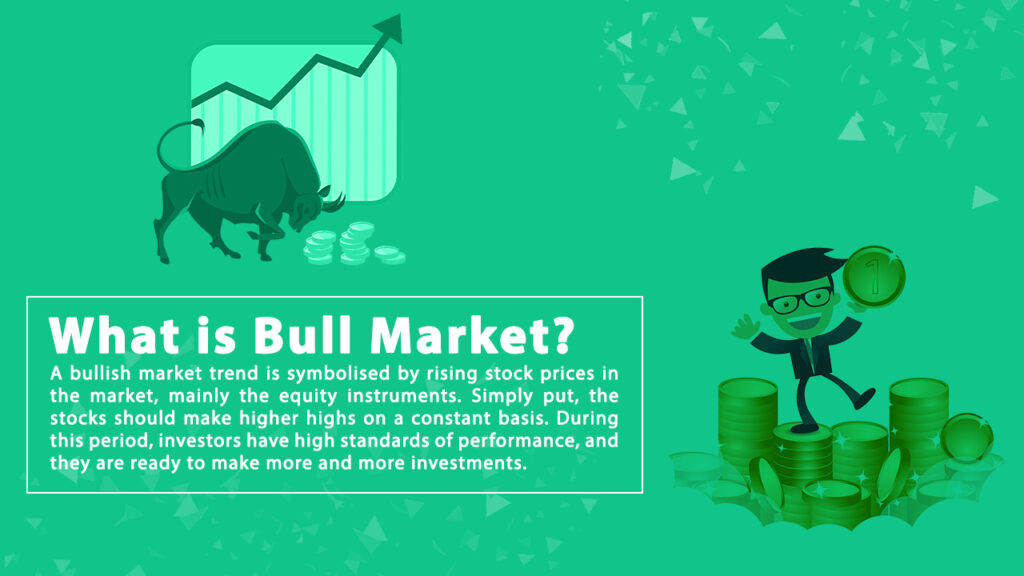A bullish market trend is symbolised by rising stock prices in the market, mainly the equity instruments. Simply put, the stocks should make higher highs on a constant basis. During this period, investors have high standards of performance, and they are ready to make more and more investments. Improved consumer confidence helps in increasing cash flow into this sector. Therefore, as businesses get more and more money, they tend to make higher investments. Eventually, this results into higher profits and distributions among shareholders.
What Impact Does It Have on a Country?
Economic growth stemming from monetary or fiscal stimulus measures produces additional income in the hands of citizens. As a result, demand for a nation’s products and services gets increased. Individuals tend to spend more which helps in higher average share prices of the listed securities.
An optimistic outlook for the stock market helps in improving the market prices, which ensures sufficient cash flows with listed companies. As a result, the production increases, which also improves the turnover. The GDP of a country, calculated as the market value of all products and services manufactured in an economy, improves as efficiency levels rise.
On the consumer side, spending power of consumers increase, raising the quality of life of residents. This leads to the categorisation of a country as being financially viable, having lower poverty and unemployment rates.
Causes of Bull Market
Economy’s strength
A bull market prevails in countries that have principally sound economic measures in place. Such countries should have proper implementations techniques, and appropriate market circumstances to facilitate sales.
Foundation of large-cap companies
Large-cap companies make up the majority of the major benchmark index, which serves as an important indicator of whether the stock market is bullish or bearish. Short-term fluctuations have a greater impact on small and mid-cap companies, which can give a false indication. Bullish markets are primarily reflected in increasing benchmark index points. If large-cap companies continue to report higher profits, the stock market is likely to benefit in the long run.
Business cycle fluctuations
The business cycle consists of an upward swing known as a market’s boom period. This is the period when economic output and growth figures rise significantly. Therefore, GDP figures and employment rates tend to improve significantly. The per capita income of individuals improve drastically. With more money available to spend, demand tends to increase. Therefore, this momentum is also seen in the stock market which then makes higher highs.
What Investors Should Do?
In a bullish trend, the ‘buy and hold’ strategy is very important, as investors who choose to hold their investments will certainly earn dividend yields apart from the capital appreciation. Furthermore, large capital gains can be realised only if investors decide to retain their securities for the long run.
‘Buy and hold’ strategy is often used by shareholders who have experience working in the share market. In the long run, stock markets do stabilise following a correction, which can help investors generate solid returns.
Thus, bull markets are an impressive time frame for new investors to start making investments in the stock market. This is because risk of significant losses is low. However, since most of the stocks continue to make higher highs, selecting the entry point can be a difficult task. The companies having strong foundation can deliver reasonable returns to the investors whenever the market makes new highs.






